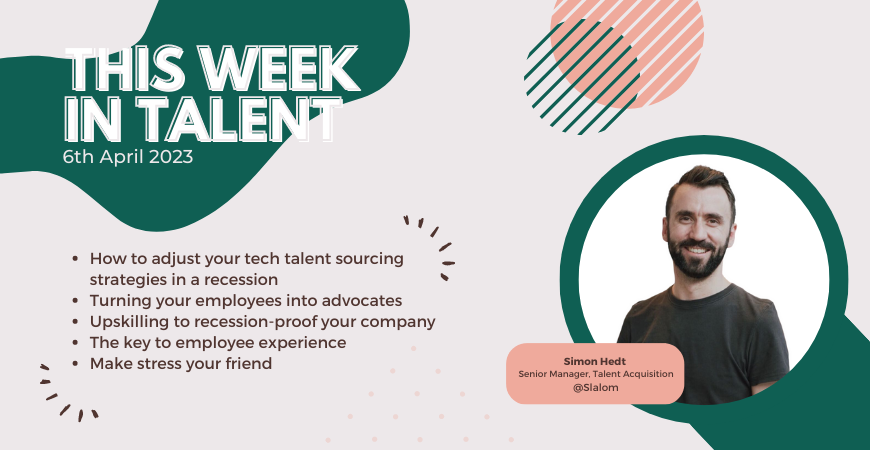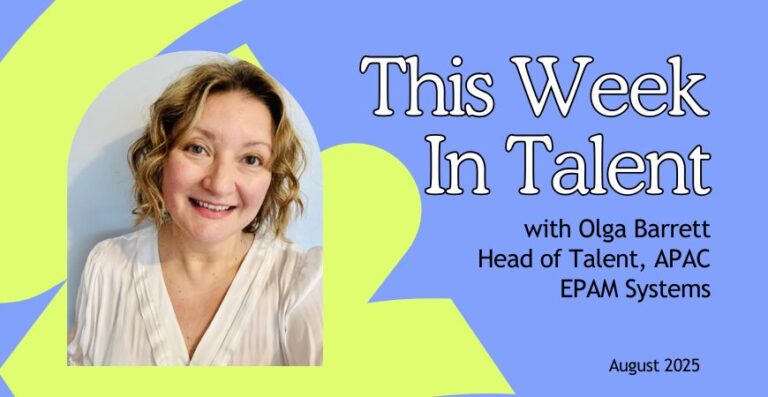Hello TWIT Readers!
Firstly, I would like to thank the ATC crew for giving me a crack at this for the month of April, I hopefully will learn a lot, maybe share some common struggles and hopefully some solutions too!
But who am I? My name is Simon, and I lead the Melbourne contingent of the Talent Acquisition team at Slalom Australia. If you don’t know who Slalom is, that’s cool, most people don’t, we only launched our Aussie business in January of 2020 so we’re still new here.
I joined Slalom as a foundational team member (number 27 to be exact) and helped grow our ANZ business to where it is today, 350 people across Melbourne, Sydney & Auckland. Despite being a well-established business for over 20 years, the team and I here in Australia had to build basically everything recruitment related from scratch. This has been fun, terrifying, painful, and satisfying along the way and I hope to share some of the pivotal moments from that journey over the next 4 weeks.
The best way of describing the Slalom journey is that we’ve been flying the plane whilst building it. Our key areas of focus have been in ID&E, recruitment processes & systems that can scale, how we elevate the candidate experience and becoming strategic advisors to the business. Fortunately, we have been able to achieve a lot of success in these four areas over the last few years, but something new that has come up over the past few weeks, is how does our TA team continue to add value to the business when hiring slows.
Again, like a lot of you, our business is not immune to the local and global economic headwinds, and this has severely impacted the volume of recruitment and almost stopped net growth in headcount. We’ve had to find ways of refocussing on the positive elements that surround a slow period specifically in using the opportunity to complete our backlog of strategic TA projects and source future pipelines of great talent. It’s not a long-term solution but seeing the team flex other skills and produce some incredible outcomes has been both enjoyable and enlightening.
So how do we become more purposeful and strategic about helping the organisations we work for protect their people in a recession and then accelerate out of one? The people in our organisations are our greatest asset, and we in TA, are advocates and champions of our people, right? I’ve tried to pull together some insights in the content below that can give us a few ideas and help educate our business leaders on the power of our people and employee experience.
Why and how to adjust your tech talent sourcing strategies in a recession
Some great insights and strategies around alternative solutions for sourcing tech talent, including utilising the economic slowdown as an opportunity to invest in L&D and upskilling existing talent within your organisation.
Power to the People: Getting Your Employees to Be Your Biggest Advocates
Employee stories are the key to creating trust in your brand, and the belief that being a part of it will be a positive and enriching experience. Hear from 8 employer brand leaders highlight their approach to empowering their most resonant voices: their people.
How to recession-proof your company and retain talent with upskilling
In a recession, hiring freezes may make filling skills gaps by hiring external talent a non-starter. This article postulates that upskilling is a win-win solution for employees and employers alike. I’m still not sure where I stand on this issue and it probably depends a lot on your company and market, but still, it’s good food for thought.
Closing the Connection Gap: The Key to Employee Experience
Something else that seems to get left by the wayside during times of economic down-turn is the value and importance of a great employee experience. Our people really are our greatest asset, in this article Slalom’s future of work incubator, HabLab, leads to big insights about what employees need and want.
TED Talk: How to make stress your friend
With all the talk about recessions, lay-offs and interest rate rises I think we’re all under a lot of stress both at work and at home. So, I’m paying forward a great little video that was shared with me recently. Go grab yourself a coffee or a cup of tea, this is 14 minutes of insight you don’t want to miss.







